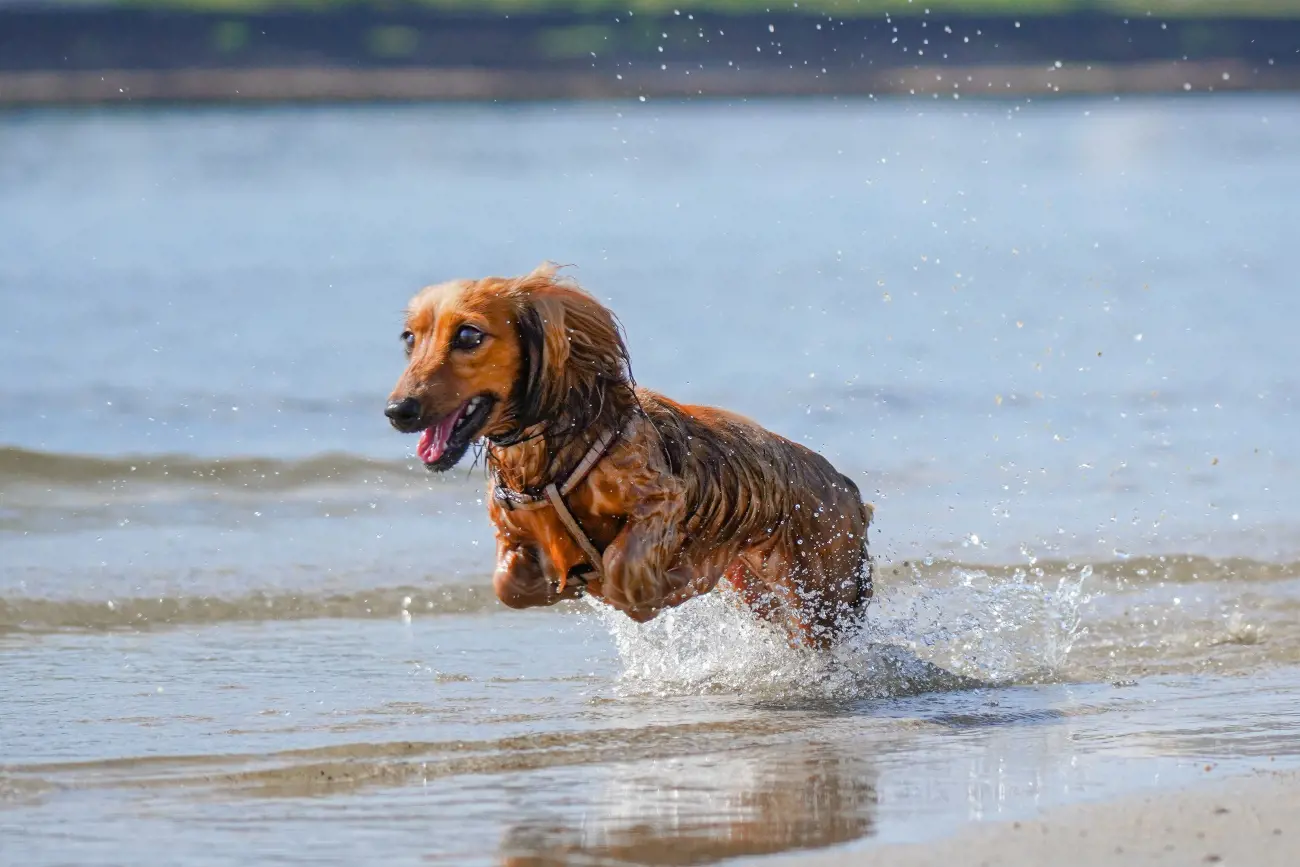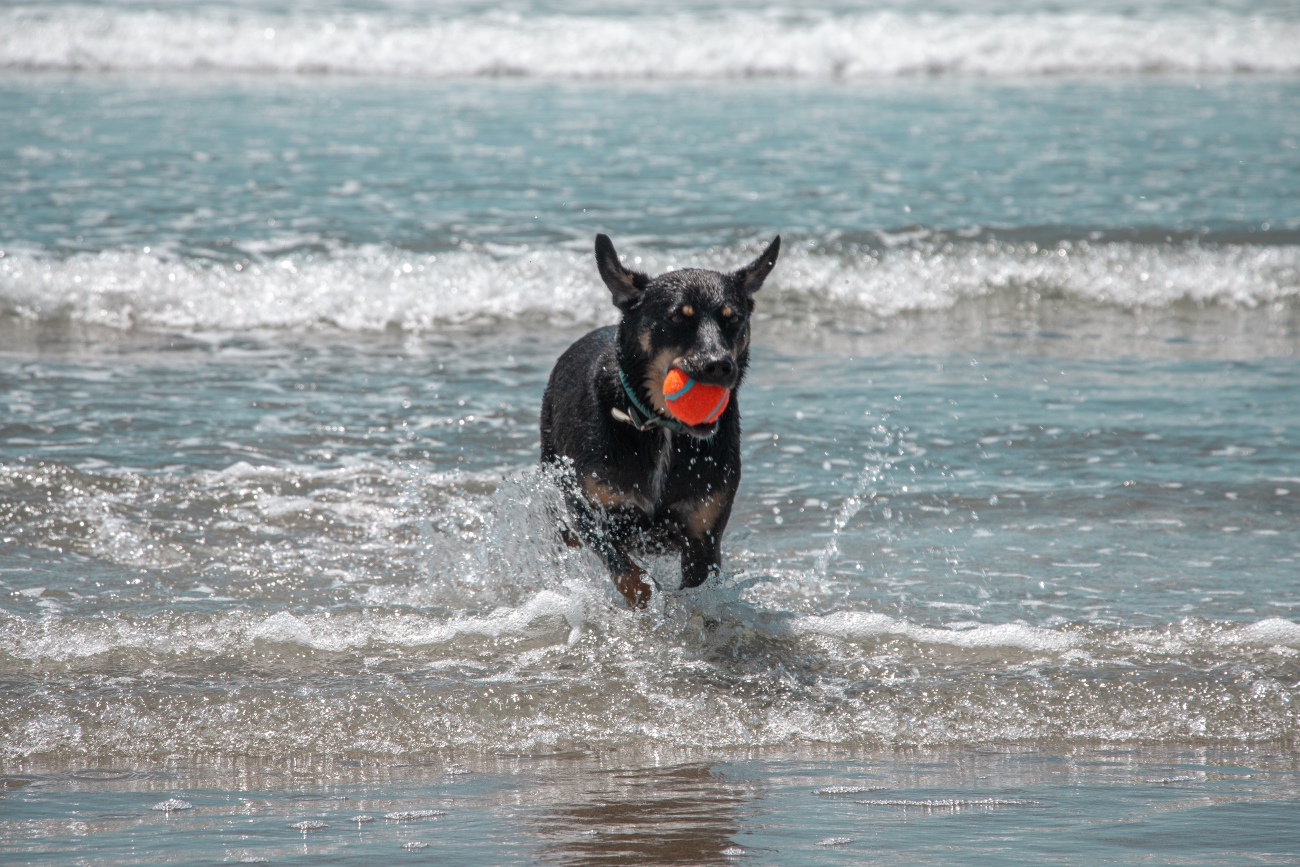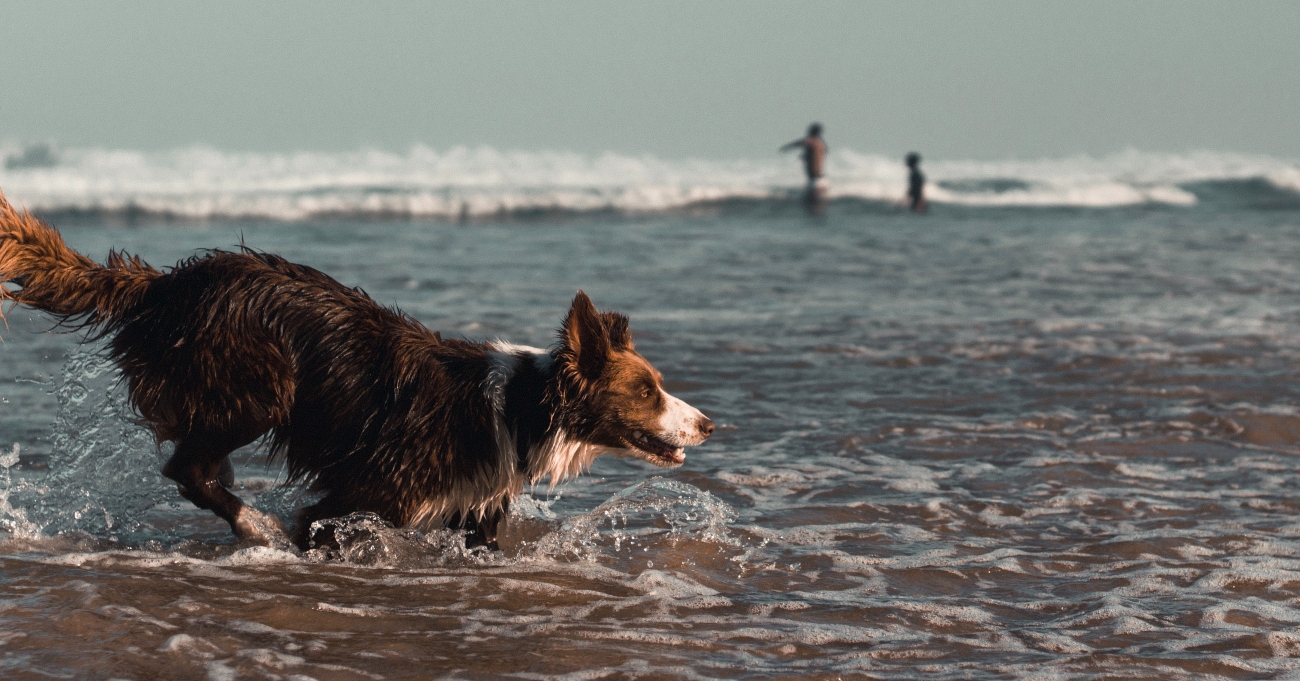What is blue green algae poisoning in dogs?
16th November, 2021

We all love seeing our beloved pups paddle through the water – noses pointed in the air, they look like they're having to muster all their strength to stop themselves from going under. But, owners need to be mindful of letting their pet just swim anywhere. If blue-green algae is lurking, it could cause all manner of health issues for your unknowing dog.
You might have passed a body of water and spotted a warning sign for blue-green algae. Hopefully you heeded the warning to not allow your dog to enter the water, but weren’t entirely sure why it posed such a threat.
In this article, we’ll look at just how blue-green algae can harm your dog and how dog insurance can be there to help you cover the costs of treatment if you need it. Sadly, there have been incidents of dogs dying from blue-green algae poisoning – and there will be more, if owners aren’t arming themselves with the facts about this group of harmful toxins.
British Veterinary Association senior vice-president Daniella Dos Santos said: “The majority of blooms are toxic and it’s impossible to tell the difference visually, so it is better to be safe than sorry.
“There is currently no known antidote for the toxins, so prompt veterinary treatment is the only way to tackle their effects and ensure a good chance of recovery for your pet.
"If you suspect your dog has been exposed to blue-green algae, seek emergency veterinary treatment as soon as possible.”

How do you know if blue-green algae is present in water?
Blue-green algae is more scientifically known as cyanobacteria, a group of bacteria which when they clump together on the surface of water give the appearance of algae.
When the organisms come together, blue-green algae can look like “green flakes, greenish bundles or brown dots in a pond, lake or stream,” says animal charity Blue Cross.
This blue-green scum sometimes looks a bit like pea soup. If the blooms of the organisms build up around the edges of the water, it can look like foam.
But, just to make life difficult for dog owners, cyanobacteria doesn’t always make itself visible to the naked eye. So, even if you don’t see any of the blue-green scum on the surface of the water, you can’t be sure that your dog is safe to swim there.
Sometimes, the organisms can produce an orange/red or yellow/brown hue on the water’s surface. While the good news is that of the 2,000-plus cyanobacteria species only about 80 produce toxins – it’s just not worth taking any chances with blue-green algae.
There’s just no way of telling the harmless from the harmful toxins, unless the water is professionally tested. Your best bet is to avoid letting your dog swim in non-flowing – or stagnant – water such as lakes and ponds.
You might be able to consult the local council website for your area who may report on where blue-green algae is known to be present. You should also keep an eye out for warning signs put up by councils.
Blue-green algae is most prevalent in bodies of water during hot weather when there is less rainfall – but it can build up at any time of the year.
As we say, it’s a bit of a minefield for owners, so it’s always best to be cautious when it comes to where you let your dog swim and drink.
What damage can it cause in dogs?
Cyanobacteria can affect all animals, not just dogs. If you see a number of dead fish floating in a body of water, there’s a good chance they’ve been killed from blue-green algae poisoning.
Meanwhile, cows, sheep, goats and other animals all sometimes drink from open bodies of water. If they are unlucky enough to take a few gulps containing cyanobacteria, it can prove fatal.
The prognosis for a dog that consumes cyanobacteria is equally serious. As the PDSA states: “Sadly, the outlook for blue green algae poisoning is not good. The toxins act very quickly, and are often deadly.”
Depending on a number of factors including the size of your dog and the quantity of toxins consumed, the symptoms of blue-green algae poisoning can be almost immediate or take a few days to develop.
When they do show, the symptoms of blue-green algae poisoning include things like:
-
Vomiting
-
Twitching
-
Seizures
-
Increased thirst
-
Drooling
-
Diarrhoea
-
Breathing difficulties
-
Collapse
It goes without saying that should your dog show any of these symptoms – regardless of whether they’ve been near a body of water recently or not – you should call your vet immediately who will advise. Of course, if they have been down by a river or lake in the past few days, you should make the vet aware as this will likely change the urgency with which they want to see your pet.
Remember that as a Purely Pets policyholder you have access to a 24-Hour Vet Helpline if you have any concerns.

The extent of the damage to your dog depends on the type of cyanobacteria that has been consumed. “Blue-green algae can produce hepatotoxins (liver toxins), neurotoxins (central nervous system toxins), or dermatoxins (skin toxins)”, VCA explains.
If your dog was to go into shock or become comatose, for example, this might suggest they have been exposed to hepatotoxins, says VCA.
Animals with muscle tremors and rigidity, paralysis, cyanosis and hypersalivation, meanwhile, might have come into contact with neurotoxins.
Dermatoxins can cause itching, redness and blistering of the skin, which, while not fatal, will still require treatment.
What treatment is available?
As we noted at the start of the article, there is no antidote for the poisonous toxins in blue-green algae. But rapid treatment can often be the difference between life and death.
To give your canine the best chance of making a full recovery, you should try to get them to the vets before the symptoms start to show. If you suspect that your dog has been in a body of water with blue-green algae present in it, alert your vet who will make an informed call based on the information you give them plus any physical signs in your dog.
For example, they might induce vomiting to clear your dog’s stomach of any suspected algae. Or they give oral activated charcoal to absorb any toxins. They might even pump your dog’s stomach if they have grounds to suspect your dog has been poisoned. Dog insurance can help cover the costs of these types of emergency procedures.
However, it’s often the case that the clinical signs start to show before dog owners have a chance to get their pet to hospital. The toxins enter the system so quickly that it’s usually about providing supportive care focusing on the affected organs.
Intravenous fluids and plasma might be used to replenish electrolytes, regulate blood glucose, support organ function and prevent shock. Muscle relaxers may help dogs suffering with muscle tremors, and anti-seizure drugs could be administered if your pup is suffering from fits. Atropine may reduce excessive drooling, while nutraceuticals can be introduced to support liver function.
There’s not a moment to lose. Having the right dog insurance in place will mean that you don't hesitate in getting your pup the treatment they deserve.
How can you protect your dog from being poisoned?
It’s as simple as ensuring your dog doesn’t go near contaminated water. If a body of water is fenced off or has a warning sign, keep well clear of it.
However, some dogs absolutely love swimming. Not knowing what’s good for them and what isn’t, dogs will sometimes head for water without you being able to do anything about it. So, if you’re walking a new route with your dog and can’t be sure if there are any lakes, ponds or streams along the way, you’re best off keeping your dog on a lead.
If your pup loves the water, we also have some water safety tips for pets that are worth reading.
It’s sometimes the case that your dog will go looking for water to drink, which leads them to a lake or pond. So make sure you’ve got plenty of drinking water on you, quenching your dog’s thirst before they go looking.
A dog doesn’t have to drink contaminated water to get blue-green algae poisoning. In the process of getting dry, they might lick their coat, which can also lead to toxins entering the system, which is why keeping an eye on where they swim is so important.
Can blue-green algae affect humans?
There has been a trend recently of dog owners joining their furry friends in the water for a wild swim. While this may be an enjoyable hobby, you also need to be aware of the dangers.
As well as being potentially fatal to animals, blue-green algae is also harmful to humans. It can cause rashes after skin contact and illnesses if ingested. Depending on the type of exposure, symptoms also include eye irritation, vomiting, diarrhoea, fever and muscle and joint pain.
While humans are unlikely to suffer long-term effects or death, in some cases, illness can be severe.
If you have been wild swimming in a body of water containing blue-green algae, wash yourself off in fresh water as soon as you can and consult your doctor if you start to show any of the symptoms listed above.

Other things to consider before taking your dog swimming
It’s not just blue green algae which poses a threat to your dog when they decide they want to go for a dip.
While some dogs are natural swimmers – Labradors usually jump in without looking for example! – others aren’t. Top-heavy dogs with short legs and large chests, such as bulldogs, boxers and dachshunds, can struggle to keep their heads above water. Drowning is a real risk.
Usually a novice swimmer will stop themselves from getting wet without you having to say anything to them. But they might still head down to a pond or a lake for a nosey, before going in for a taste of the water.
PDSA advises to make sure you know your dog’s swimming abilities before taking them for a walk anywhere near water. If you’re unsure then take them to a shallow body of water (ensuring there is no blue-green algae present, of course) and see how they get on.
They might need a bit of support and encouragement. Toys and treats are a good way to make their first swim a positive experience. When it comes to swimming, put your arm under their stomach to support them until they’ve got the hang of kicking with all four legs.
Make sure they don’t overdo it – swimming can be very tiring for a dog, especially if they are relatively new to the water. Even if they are a strong swimmer, don’t leave your pet unattended as they might struggle to get out.
The other disease you have to be careful of when letting your dog go for a paddle is leptospirosis. This is an infection spread through rat urine and contaminated water. Thankfully, you can vaccinate your dog against leptospirosis, but you will need to keep on top of their boosters.
If leptospirosis gets into a dog’s system, it spreads throughout their entire body, reproducing in the liver, kidneys, central nervous system, eyes, and reproductive system.
Protect your pet with 5* Defaqto rated insurance
Owning a dog really keeps you on your toes!
To make life easier for yourself, take out a dog insurance policy which means you don’t have to think too hard should your pet need any emergency treatment.
Here at Purely Pets, our dog insurance includes a 24-Hour Vet Helpline, free of charge to all of our customers. So, should you need to think on your feet, you can pick up the phone and ask the experts without delay.
As award-winning dog insurance specialists, we understand what it is that pet owners need from their dog insurance.
Helpful Pages
Recent Posts
Pet Insurance Quote
- 98% claims paid *
- Claims paid directly to vets
- 24/7 vet video consultations
- Interest free monthly payments




